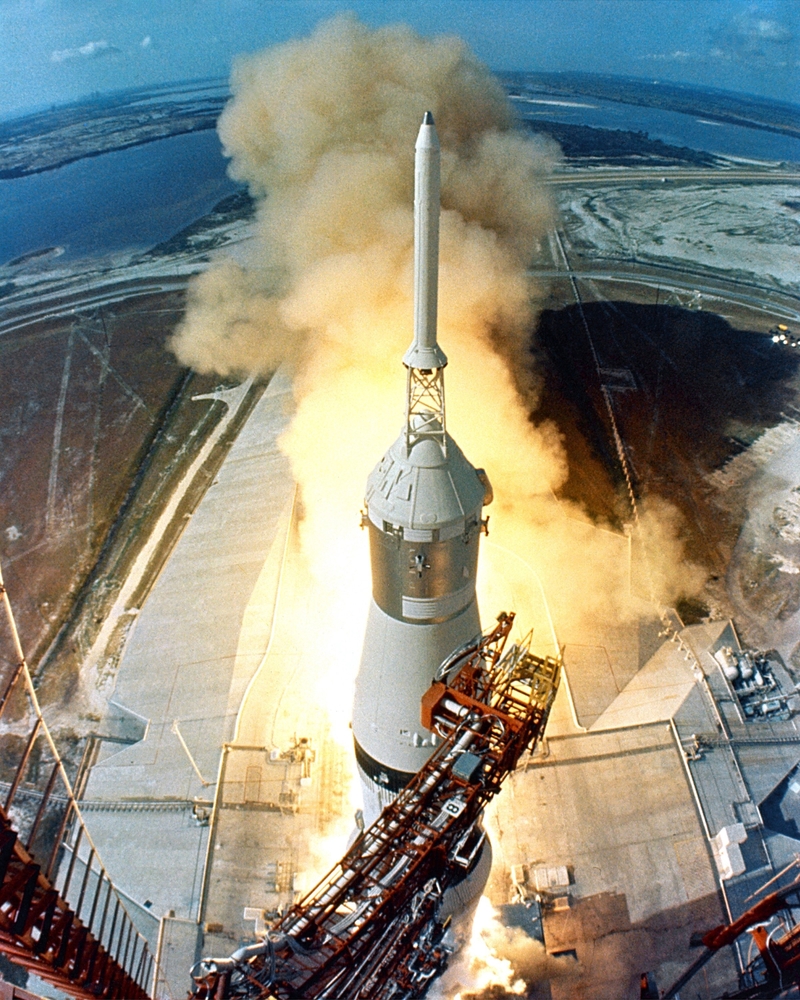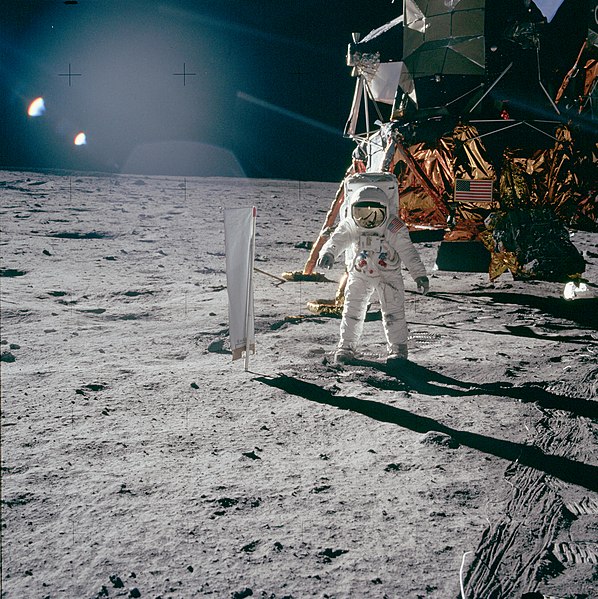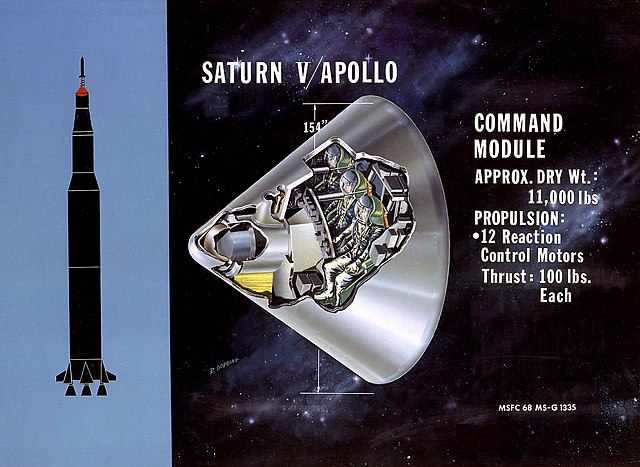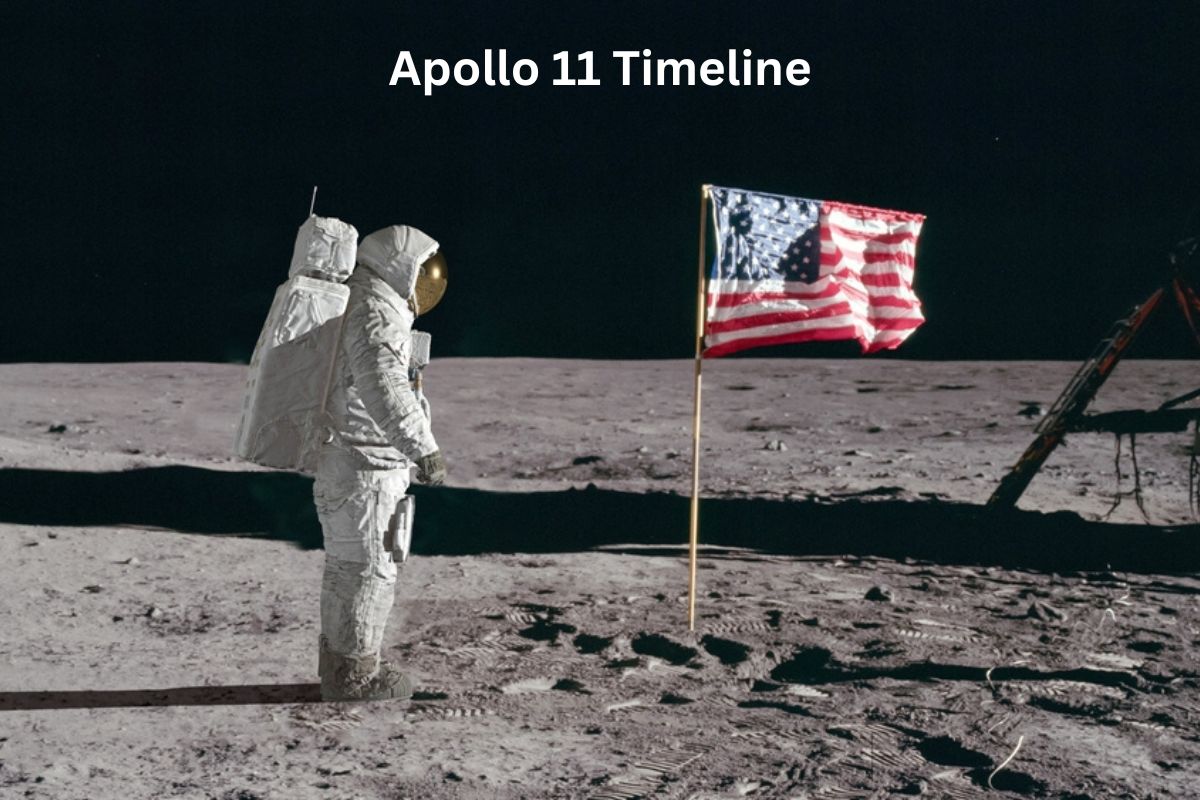The Apollo 11 mission, launched by NASA on July 16, 1969, stands as a monumental achievement in human history. Its primary objective was to successfully land astronauts on the Moon and safely return them to Earth.
Led by Commander Neil Armstrong, Lunar Module Pilot Buzz Aldrin, and Command Module Pilot Michael Collins, this mission marked the culmination of years of scientific, engineering, and technological innovation.
In this exploration, we delve into the key events and milestones of the Apollo 11 mission, recounting the incredible journey of these astronauts as they ventured beyond our planet and took humanity’s first steps on the lunar surface.
| Date | Event |
|---|---|
| July 16, 1969 | 06:32 AM EDT: Apollo 11 launched from Kennedy Space Center in Florida. |
| July 17, 1969 | Spacecraft enters Earth orbit and begins journey to the Moon. |
| July 18, 1969 | Spacecraft enters lunar orbit. Lunar Module separates from Command Module. |
| July 19, 1969 | Lunar Module performs descent orbit insertion burn. |
| July 20, 1969 | 04:17 PM EDT: Lunar Module lands on the Moon’s surface in the Sea of Tranquility. |
| 10:39 PM EDT: Neil Armstrong and Buzz Aldrin step onto the lunar surface. | |
| July 21, 1969 | 05:55 AM EDT: Lunar Module’s ascent stage lifts off from the Moon. |
| 01:54 PM EDT: Ascent stage docks with Command Module in lunar orbit. | |
| July 22, 1969 | Lunar Module jettisoned and crashes into the Moon. |
| 12:56 PM EDT: Apollo 11 fires its main engine to return to Earth. | |
| July 24, 1969 | Apollo 11 reenters Earth’s atmosphere. |
| 12:50 PM EDT: Command Module splashes down safely in the Pacific Ocean. |
Timeline of Apollo 11
July 16, 1969: Apollo 11 launched from Kennedy Space Center in Florida at 06:32 AM EDT
At 06:32 AM Eastern Daylight Time (EDT), Apollo 11 embarked on its historic journey to the Moon from the Kennedy Space Center in Florida. The spacecraft was propelled into space by the mighty Saturn V rocket, one of the most powerful machines ever built.
Also Read: Facts About Apollo 11
Onboard were three astronauts who would play critical roles in the mission: Commander Neil Armstrong, Lunar Module Pilot Buzz Aldrin, and Command Module Pilot Michael Collins. Their mission was to achieve a lunar landing and safely return to Earth.

July 17, 1969: The spacecraft entered Earth orbit and began its journey to the Moon
With the successful launch, the Apollo 11 spacecraft entered Earth orbit. Over the next three days, it traveled through the vacuum of space, steadily increasing its distance from Earth while en route to the Moon.
This leg of the journey involved meticulous navigation, course corrections, and communication with mission control back on Earth. The crew was busy preparing for lunar orbit insertion and descent.
July 18, 1969: The spacecraft entered lunar orbit, and the Lunar Module separated from the Command Module
On July 18, Apollo 11 reached a significant milestone as it entered lunar orbit. This meant that the spacecraft was now in the Moon’s gravitational influence, circling our celestial neighbor. This complex maneuver required precise calculations and engine burns to slow down the spacecraft and be captured by the Moon’s gravity.
Also Read: Moon Landing Facts
Additionally, the spacecraft’s components underwent separation. The Lunar Module, named “Eagle,” detached from the Command Module, named “Columbia.”
The Lunar Module was specially designed for landing on the Moon’s surface, while the Command Module would remain in lunar orbit, piloted by Michael Collins. This separation marked the beginning of the final phase of the mission, where Armstrong and Aldrin would descend to the lunar surface in the Lunar Module.
July 19, 1969: The Lunar Module performed a descent orbit insertion burn
On July 19, 1969, as Apollo 11 continued its orbit around the Moon, the crew prepared for the critical phase of their mission: the descent to the lunar surface.
To accomplish this, the Lunar Module, named “Eagle,” performed a critical maneuver known as the descent orbit insertion burn. This engine burn adjusted the spacecraft’s trajectory, aligning it for a controlled descent towards the chosen landing site in the Sea of Tranquility.
The descent to the lunar surface was a tense and carefully orchestrated process. Neil Armstrong, the mission commander, and Buzz Aldrin, the lunar module pilot, closely monitored the spacecraft’s instruments while manually controlling its descent. They had to make split-second decisions to ensure a safe landing.

July 20, 1969: At 04:17 PM EDT, the Lunar Module landed on the Moon’s surface in the Sea of Tranquility, with Neil Armstrong and Buzz Aldrin
On July 20, 1969, at 04:17 PM Eastern Daylight Time (EDT), the Lunar Module “Eagle” successfully touched down on the lunar surface in the designated landing site within the Sea of Tranquility.
This historic moment marked the first time in human history that a spacecraft carrying astronauts had landed on another celestial body.
Neil Armstrong, who was the mission commander, famously reported to mission control, “The Eagle has landed,” signifying the successful touchdown. The landing was met with relief and jubilation by mission control and people around the world who were following the event.
July 20, 1969: At 10:39 PM EDT, Neil Armstrong and Buzz Aldrin stepped onto the lunar surface, making Armstrong the first human to set foot on the Moon
Later on the same day, at 10:39 PM EDT, Neil Armstrong and Buzz Aldrin became the first humans to set foot on the lunar surface. Neil Armstrong’s iconic words as he descended the Lunar Module’s ladder were heard by millions:
“That’s one small step for [a] man, one giant leap for mankind.”
While on the lunar surface, Armstrong and Aldrin conducted experiments, collected rock and soil samples, and took photographs. These activities were part of their mission to gather valuable scientific data and to fulfill the goals of the Apollo program.
Michael Collins, the command module pilot, orbited above in the Command Module “Columbia” during this time, awaiting the return of his fellow astronauts from the lunar surface.

July 21, 1969: At 05:55 AM EDT, the Lunar Module’s ascent stage lifted off from the Moon, returning to lunar orbit
On July 21, 1969, after spending approximately 21 hours on the lunar surface, the ascent stage of the Lunar Module “Eagle” lifted off from the Moon.
This ascent was a critical phase of the mission, as it aimed to reunite the lunar module with the Command Module “Columbia,” which was orbiting above with astronaut Michael Collins aboard.
The ascent stage had a single engine, known as the ascent engine, which had to perform flawlessly to carry Neil Armstrong and Buzz Aldrin safely back into lunar orbit. This was a crucial step, as any failure at this stage would have left the astronauts stranded on the Moon.
July 21, 1969: At 01:54 PM EDT, the ascent stage docked with the Command Module “Columbia” in lunar orbit
After a successful ascent from the lunar surface, the Lunar Module’s ascent stage needed to rendezvous and dock with the Command Module “Columbia” in lunar orbit.
Michael Collins, who had been orbiting alone in the Command Module while Armstrong and Aldrin were on the lunar surface, played a critical role in this rendezvous.
The precise timing, navigation, and coordination required for this operation were a testament to the skill and training of the Apollo astronauts and the NASA ground control teams. The successful docking of the two spacecraft marked a key milestone in the mission.
July 22, 1969: The Lunar Module was jettisoned and crashed into the Moon
After the successful rendezvous and docking, the Lunar Module “Eagle” had served its purpose and was no longer needed. To make room for the Command Module’s reentry into Earth’s atmosphere, the Lunar Module’s descent stage was jettisoned and intentionally crashed onto the lunar surface.
This deliberate crash marked the end of the Lunar Module’s mission, and it became the final resting place of the spacecraft on the Moon’s surface. It was a necessary step to lighten the load of the Command Module for the journey back to Earth.
July 22, 1969: At 12:56 PM EDT, Apollo 11 fired its main engine to begin its journey back to Earth
With the Lunar Module safely jettisoned, Apollo 11 fired its main engine to leave lunar orbit and begin the journey back to Earth. The astronauts were now on their way home, leaving the Moon behind.
The journey back to Earth took several days, during which the crew conducted experiments, made observations, and continued to perform routine spacecraft operations.
The Command Module “Columbia” was the only part of the spacecraft that would re-enter Earth’s atmosphere and return the astronauts safely to their home planet.

July 24, 1969: The Apollo 11 spacecraft reentered Earth’s atmosphere
After a multi-day journey through space, the Command Module “Columbia” began its reentry into Earth’s atmosphere on July 24, 1969. Reentry was a critical and potentially perilous phase of the mission.
The spacecraft was traveling at an extremely high speed and had to endure the intense heat generated by friction with the Earth’s atmosphere.
To protect the astronauts from the searing heat, the Command Module had a heat shield designed to withstand temperatures exceeding 5,000 degrees Fahrenheit (2,800 degrees Celsius). The spacecraft’s blunt shape helped dissipate the heat, allowing it to survive the fiery reentry.
During reentry, communication with mission control was temporarily lost due to the ionized plasma surrounding the spacecraft. This period of silence, known as “reentry blackout,” was expected and lasted several minutes.
July 24, 1969: At 12:50 PM EDT, the Command Module “Columbia” splashed down safely in the Pacific Ocean
The final and eagerly anticipated event of the Apollo 11 mission was the splashdown in the Pacific Ocean. At 12:50 PM Eastern Daylight Time (EDT) on July 24, 1969, the Command Module “Columbia” splashed down safely in the Pacific Ocean, approximately 13 nautical miles from the recovery ship USS Hornet.
The astronauts had returned to Earth after their historic journey to the Moon and back. They remained inside the Command Module, which was designed to float, and were greeted by a team of Navy divers and helicopters that were dispatched to retrieve them.
The successful recovery marked the conclusion of the Apollo 11 mission, and the astronauts were brought aboard the USS Hornet, where they underwent a series of quarantine procedures to ensure that they did not carry any potentially harmful lunar pathogens back to Earth.
